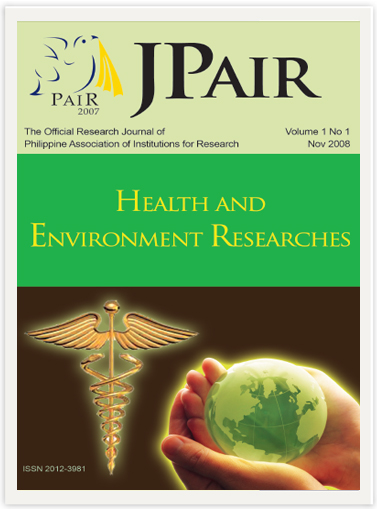Level of Professional Competence of Radiologic Technologist in Davao City on Factor Selection of X-Rays of Skull, Extremities and Chest
DOI:
https://doi.org/10.7719/jpair.v1i1.24Keywords:
Professional Competence, Radiologic Technologist, Skull, Extremities and ChestAbstract
The study aimed to determine the professional competence of radiologic technologists in Davao City regarding factor selection for X-rays of the skull, chest, and extremities. Specifically, it examined the respondents' profiles in terms of age, educational attainment, institutions where they work, and years of service; their professional competence in factor selection for X-rays of the skull, chest, and extremities; and the association between their competence and profile variables. The study employed a descriptive-correlational design and statistical methods such as frequency counts, arithmetic mean, chi-square, Pearson-r, Kruskal-Wallis one-way ANOVA, and Mann-Whitney U test. Literature on professional competence and factor selection was reviewed to support the study. Results showed significant differences in professional competence based on profile variables. Most respondents were aged 21–25 years; 18 held BS Radiologic Technology degrees (one with RT training certification), and 19 acquired skills from college/university training. Twelve worked at institution B, six at institution A, and three at institution C, with most having served for 1–5 years. Recommendations included promoting continued education for radiologic technologists to enhance their expertise and encouraging institutions offering Radiologic Technology programs to integrate theory with practice through dynamic internship programs to test and develop students' competence effectively.
Metrics
Downloads
References
Burns, E. F. (1992). Radiographic imaging: A guide for producing quality radiographs. Saunders.
Downloads
Published
Issue
Section
License
Copyright (c) 2008 Richard Pabunag

This work is licensed under a Creative Commons Attribution-NonCommercial 4.0 International License.
Open Access. This article published by JPAIR Multidisciplinary Research is licensed under a Creative Commons Attribution-Noncommercial 4.0 International (CC BY-NC 4.0). You are free to share (copy and redistribute the material in any medium or format) and adapt (remix, transform, and build upon the material). Under the following terms, you must give appropriate credit, provide a link to the license, and indicate if changes were made. You may do so in any reasonable manner, but not in any way that suggests the licensor endorses you or your use. You may not use the material for commercial purposes.























